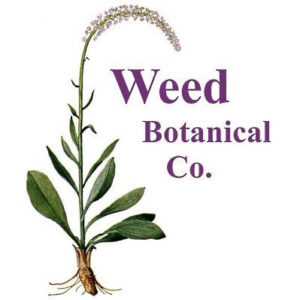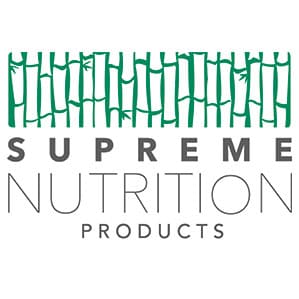Have you ever wondered what the difference is between ‘juicing’ and ‘blending?’ 🥤
Although they sound like they could be the same, they’re actually quite different. Both of them will contain at least one or two types of fruit, and maybe even a few veggies. But don’t let that fool you – there are some very distinct differences between them.
So let’s dive in! 🍎
A quick history of juicing
The word Juice comes from the Latin ‘jus’ meaning the liquid part of a fruit or vegetable. Historical documents from countries such as Asia and India note they would ‘jus’ not just fruits and vegetables, but would also include herbs and medicinal honey.
But some say that juicing dates back to 150 B.C. 🍊
The Dead Sea Scrolls mention an ancient tribe in Israel called the Essenes who noted that they smashed up figs and pomegranates to give them a nice boost of energy. Whether or not this was considered to be a ‘juice’ is yet to be confirmed, but nonetheless, they understood there was a health benefit to extracting – aka smashing – certain foods together for a specific benefit.
So, it can be said that juicing is actually part of our medical history!
Modern juicing began in the early 1900s when Florida orange growers needed a way to transport their oranges before they went bad (this was before refrigeration was available). They decided to squeeze out the juice and pasteurize it to kill the bacteria and give it a longer shelf life.
Then, in the 1930s, the first (rather large) juicing machine called the Norwalk was invented by Dr. Norman Walker. This device would grate and squeeze the fruits and veggies into a linen bag where a hydraulic press would extract the juice. Dr. Walker was an avid juice drinker until the day he died at the ripe old age of 118 when he died peacefully in his sleep, in perfect health.
In the 1950s, the first masticating juicer called the Champion juicer was introduced, making it easy for anyone to enjoy the health benefits. Centrifugal juicers also became popular, culminating in a juicing movement that really picked up steam in the 1970s and hasn’t stopped since! 😆
Today, you can find prepared juices at almost any grocery or convenience store. They have definitely become a regular part of our culture and food scene. 🤤
What are the benefits of juicing?
Simply put, juicing is a quick way to capture and concentrate all the vitamins and minerals found inside fruits and vegetables. 🍇
Depending on what foods you are juicing, it can be a great source of:
- Vitamin C
- Vitamin A
- Vitamin K
- Potassium
- Folate
- Calcium
- Iron
- Trace minerals
- Complex plant chemicals or phytonutrients
- And so much more
When just the liquid is consumed, your body can absorb these nutrients quickly, without needing to process the other components of whole fruits and veggies.
Juicing can also be an easy way to get these important vitamins and minerals into your body if you’re not a fan of eating them. 🫑
The plant chemicals found in the juice can support cardiovascular health by producing more nitric oxide in the blood. Nitric oxide relaxes your blood vessels which causes an increase in blood flow. Fruits and veggies are high in nitrates, which naturally convert to nitric oxide! 🫀
Juicing is also a great way to give your digestive system a little break, allowing it time to rest and reset. 😴
What are the disadvantages of juicing?
The first big drawback of juicing has to do with the missing fiber. All plants contain fiber which is an important part of how we digest our food. Not only does the fiber provide essential food for your gut microbes, it helps keep you regular, makes you feel full after a meal, and works to maintain stable blood sugar levels.
When the fiber is completely removed during the juicing process, we are missing out on aaaaallll those amazing benefits. There’s no doubt that the vitamins and minerals found in the juice itself are good for your health. However, when we remove the fiber, we’re leaving behind one of the most important parts!
Many juices, especially those with a high percentage of fruit, have a very high sugar content, in part because of the missing fiber. When the juice hits the bloodstream, the sugar does too which can temporarily disrupt your blood glucose.
Let’s keep in mind: Every fruit has a different sugar content, so the trick is to be mindful of what fruits you choose for juicing. And if possible, add plenty of green veggies to offset a bit.
Here are some examples of the sugar content in raw juices:
🥕 An 8-ounce serving of raw carrot juice contains around 7-9 grams of sugar.
🥭 An 8-ounce serving of raw passion fruit juice contains around 35 grams of sugar.
🥤 How about raw apple juice? 8 ounces contains about 25-30 grams of sugar, depending on the type of apple you juice.
So now you know what to watch out for when it comes to juicing.
This leads us beautifully to our next topic! Blending! 🫗
What are the benefits of blending (smoothies and shakes)?
As I mentioned earlier, there is a distinct difference between juicing and blending. Juicing removes the fiber and can cause a spike in blood sugar if you’re not careful. But on the flip side, the juice is full of concentrated vitamins and minerals just waiting to be used by your body!
But now, let’s talk about blending.
Blending is the complete opposite. And there are sooooo many benefits!
For starters, when you blend your fruits and veggies into a smoothie or shake, you are able to keep everything intact including the fiber! That means you’ll feel full for longer, your digestion will be MUCH happier, and your blood sugar won’t go on a roller coaster ride. Um, score! 🥰
Blending also has another unique advantage – it gives our digestion a little break since the act of blending helps “predigest” or break down complex food structures, requiring less effort to digest it when it reaches your stomach. This makes it soooo much easier for your body to absorb those nutrients quickly.
Blending has endless possibilities when it comes to bringing your creativity to light. You can add almost anything to a blended smoothie to add even more nutrients, flavors, and create a taste your mouth will love.
You can add protein powders and other nutrients like bee pollen, cacao, and cinnamon to the mix. Adding nuts and seeds such as walnuts, flax seeds, or chia seeds can provide a rich amount of Omega-3 fatty acids. And don’t forget the importance of adding healthy fats such as coconut oil to make your blended smoothie a satisfying work of art! There are so many possibilities!
It’s also a great way to sneak in some fruits and veggies you may not like or can’t stand to eat by themselves. Things like spinach, swiss chard, kale, mesclun, or romaine are just a few. Smoothies are a great way to get cucumbers, squashes, and even bell peppers in your diet! 🫑
You can even add avocados to make it a little more creamy and disguise any strong “green” taste.
In short, blending can save you time, energy, and extensive clean-up. It’s a quick way to pack your tummy with nutrients and get on with your life! 👏
What are the disadvantages of blending?
As with juicing, you’ll want to watch the sugar content of the fruits you include in your smoothies. A good rule of thumb is to add 1-2 fruits and then 2-3 times as many veggies. This ratio will help you avoid the temptation to indulge in an all-fruit smoothie!
Another consideration is the fiber content. If you’re prone to digestive issues down below, too much fiber too fast could cause bloating, gas, and belly pain if you include too much too soon.
Just check in with your gut (no pun intended) and go with what feels right. You can always increase as you go.
You’ve got this! ✋
Is juicing or blending better?
Here’s the deal.
You’re gonna have different needs based on different days. 😎
Thankfully, you don’t have to decide whether you’re on “team juicing” or “team blending” for the rest of your life. You get to choose when and how to use each one!
If you notice that you wake up and are still feeling full from last night’s dinner, that might be a great time to opt for a nice green juice to do a little cleansing first thing in the morning. This gives your digestive system time to rest and recoup from the night before.
And when you’re feeling hungry… but not super hungry… and you need a little somethin'-somethin', a smoothie might just do the trick. This will allow you to take in some great nutrients without overwhelming your digestive system.
Here’s a nifty chart from Suja Organic that provides an overview.
Now that you’re a pro at the differences between juicing and blending, how do you find the right equipment?
I’m so glad you asked. Keep reading! 👇
How do I choose a juicer or blender?
Here’s some helpful advice to get you started.
There are so many sizes, brands, and features for juicers and blenders, it can feel a little overwhelming to choose. And some of them can be pricey so you’ll want to know you’re getting one that fits your lifestyle. 🥳
The best place to start is by asking around. Check in with your family, friends, coworkers, or other health-conscious people you know. Ask them if they have a juicer and if so, what type and then how well they like it. Do the same for a blender.
Because the best advertising is word of mouth and personal recommendation.
But just in case you don’t have any family or friends who juice or blend (🥹), I like the following two lists from Good Housekeeping to get you started:
This subject can be a rabbit hole so reader beware. Our advice: Go with your gut, buy what you can afford, and let your body do the rest. 🤗
Are you ready to start juicing and/or blending?
Having a wide array of fruit and vegetables in your diet is crucial for optimal health. We need variety in our foods, much like we need variety in our lives. Your body will perform so much better when you give it as many nutrients as possible.
And one of the best ways to do that is by juicing or making blended smoothies.
Recipes for healthy juices and/or blended smoothies are abundant so whenever you’re ready, do a quick search, find a few that sound good, and get started! 🥬
Here’s to your health!
References:
“The Full History of Juicing: Is it Just a Trend?” | Well Pared | November 27, 2017:
“Are There Health Benefits to Juicing?” | Nourish by WebMD | November 23, 2022:
https://www.webmd.com/diet/juicing-health-benefits
“Is juicing healthier than eating whole fruits and vegetables?” | Mayo Clinic | October 9, 2021:
“Why Blend? Top 9 Benefits of Blending Food.” | Good 4 Life Mart:
https://www.good4lifemart.com/top-9-benefits-of-blending-food/
“9 Best Juicers, According to Testing.” | Good Housekeeping | April 3, 2023:
“7 Best Blenders of 2023, Tested and Reviewed.” | Good Housekeeping | January 17, 2023:





